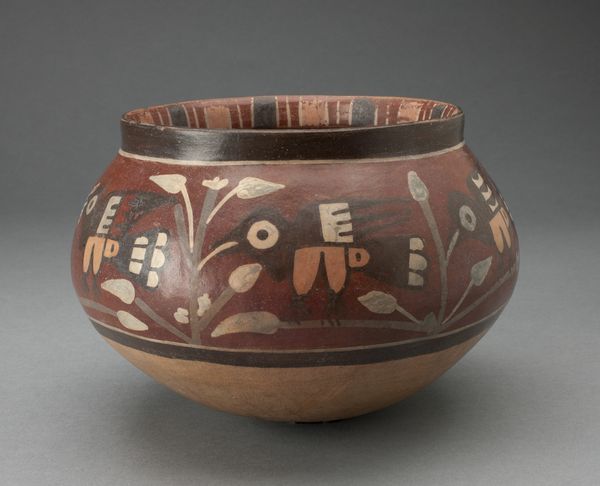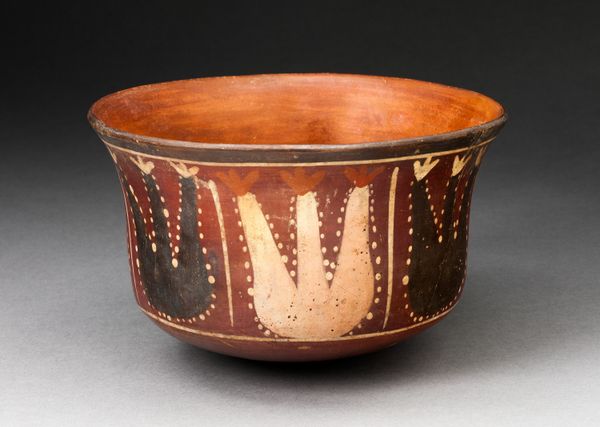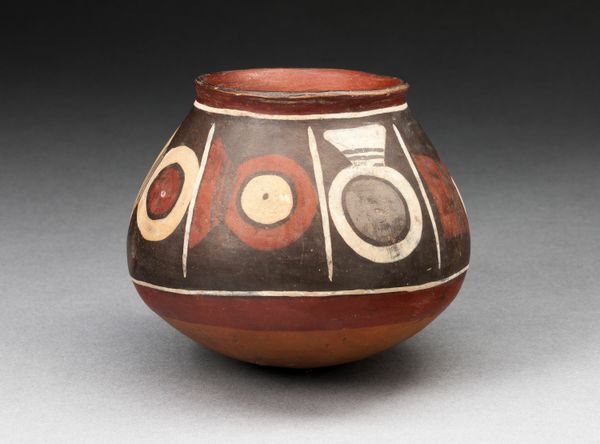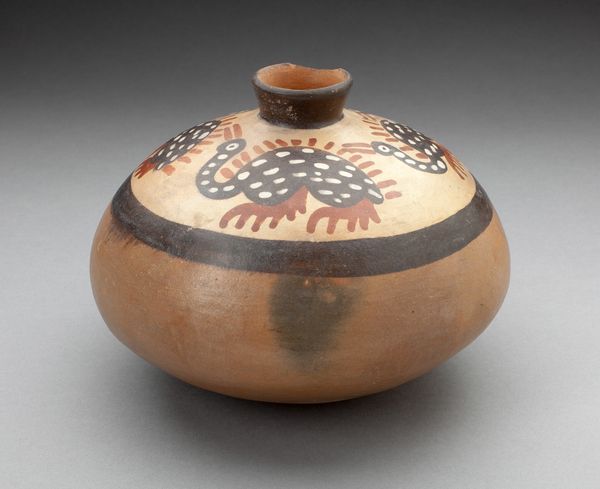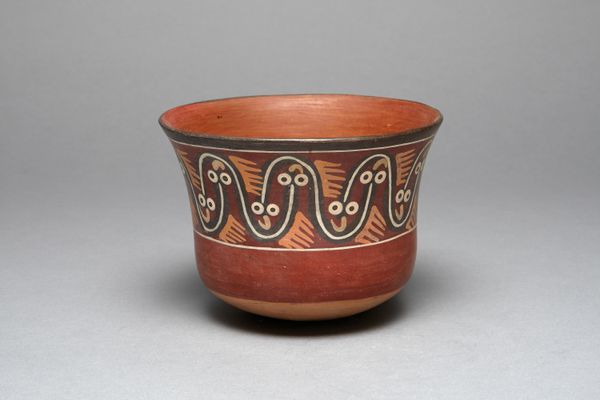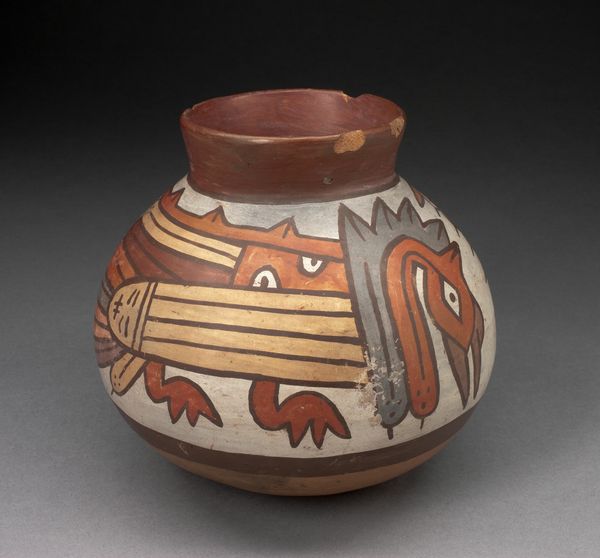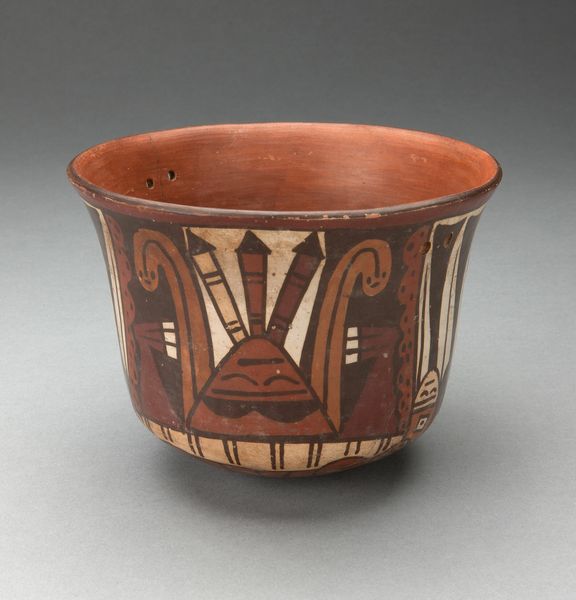
Bowl with a Horizontal Band of Repeated Abstract Motifs c. 180 - 500
0:00
0:00
ceramic, inorganic-material
#
round frame
#
3d sculpting
#
circular oval feature
#
egg art
#
3d printed part
#
war
#
ceramic
#
jewelry design
#
vessel
#
stoneware
#
wash background
#
inorganic-material
#
latin-american
#
ceramic
#
metallic object render
Dimensions: 7.6 × 11.8 cm (3 × 4 5/8 in.)
Copyright: Public Domain
This bowl was painted by an artist of the Nazca culture, on the southern coast of Peru. The Nazca are well known for their polychrome pottery. This example features a reddish-brown slip, with abstract motifs painted in white, orange, and grey. The Nazca flourished in a desert environment, and like other Pre-Columbian Andean cultures, they developed sophisticated irrigation systems. The desert landscape may have encouraged the Nazca to create their famous ground drawings, known as Nazca lines. The ground drawings can only be seen from above, but it is not known whether the Nazca had the means to view them in this way. Instead, scholars like Helaine Silverman have argued that they may have been the focal point for ritual processions. Similarly, this bowl may have been used in ritual and ceremonial contexts. As historians, we can learn more about these objects and images through archival sources, archaeological records, and through thinking carefully about how cultural institutions like museums shape our understanding of the past.
Comments
No comments
Be the first to comment and join the conversation on the ultimate creative platform.
